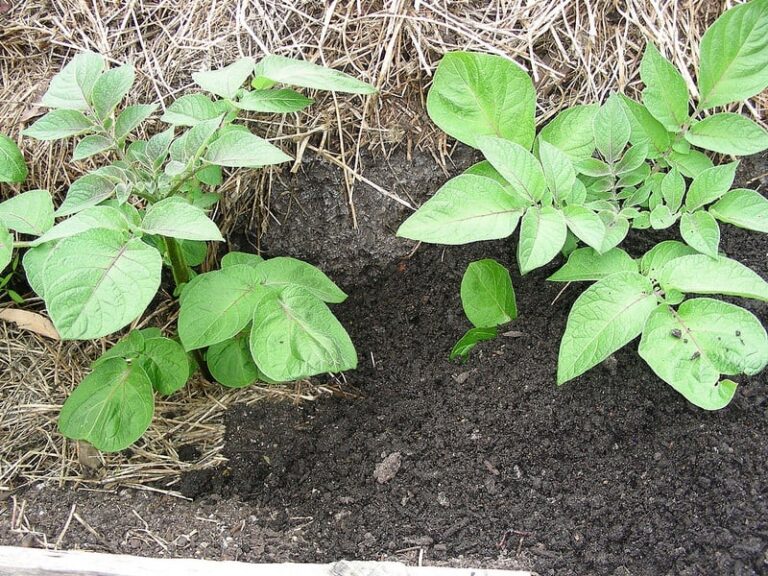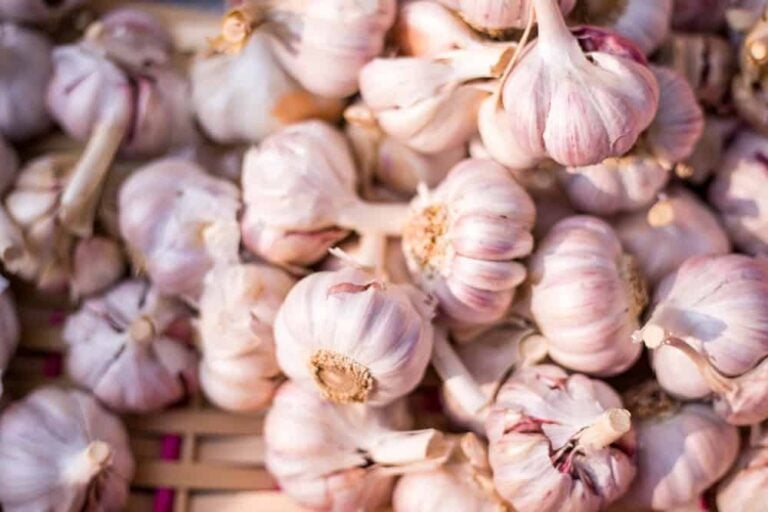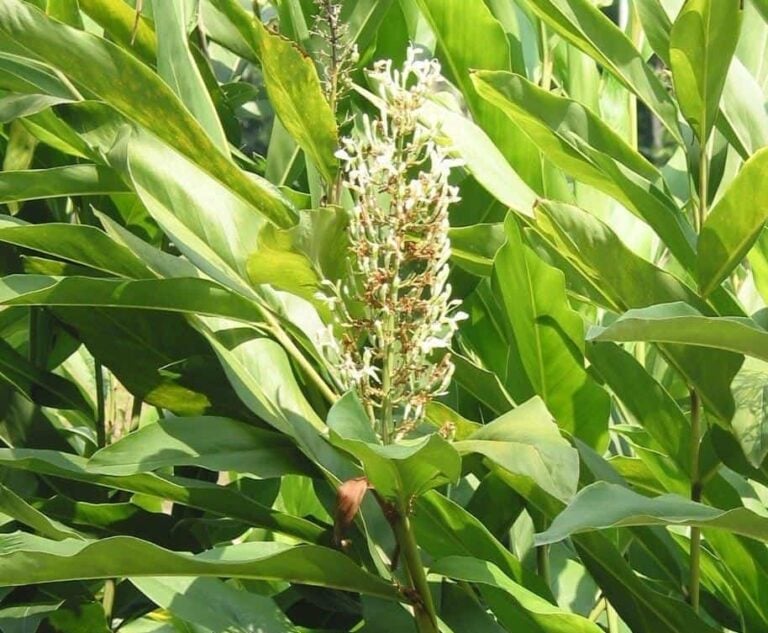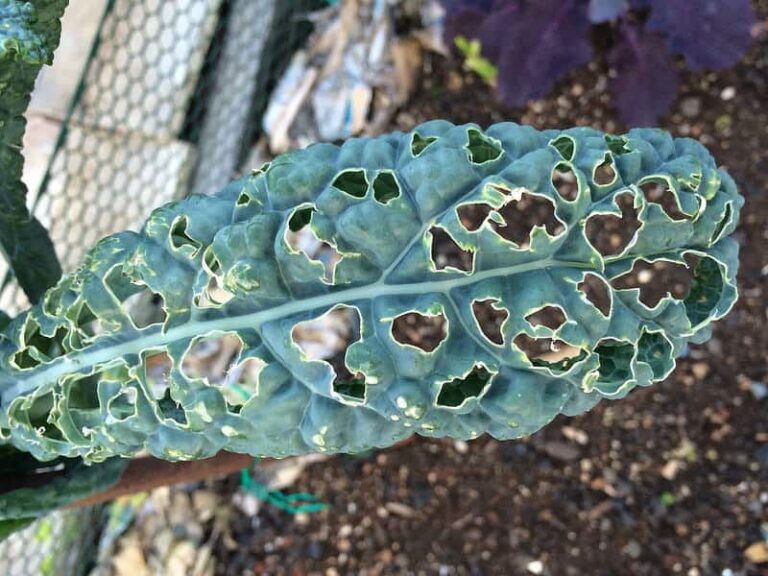How Long Does It Take To Grow Potatoes? Quickly see timing by variety
Like me, you’ve probably noticed that if you leave your potatoes in the cupboard for too long…they start growing more! When you see that happening, you may ask yourself how long does it take to grow potatoes on my own?
They really don’t need much and can thrive in the most unexpected of conditions. So it is no surprise that many people decide to try their hand at growing them on purpose.

However, if you do decide to grow your own potatoes, there’s a question you will want the answer to: how long does it take to grow potatoes? The truth is that it depends on the variety of potatoes you’ve planted, as different types of potatoes have different growth times.
Overall, there are three main types of potatoes, so we’ll go through these categories and give you the estimated growing times:
Table of Contents
Potato Varieties and Growth Duration
Potatoes come in a variety of types with different growth durations, depending on the variety and specific conditions. This section will cover some common categories of potato varieties and their respective growth times.
Early Season Potatoes
Early season potatoes are varieties that mature relatively quickly, typically in about 70-80 days after planting. These potatoes are ideal for gardeners who want to enjoy fresh, homegrown potatoes earlier in the year. Some popular early season potato varieties include:
- Red Pontiac
- Irish Cobbler
- Yukon Gold
- Norland
Since these potatoes mature quickly, they are generally smaller and may not store as well as late-season varieties.
Mid-Season Potatoes
Mid-season potatoes usually take up to 100 days to grow and mature. These potatoes are planted in mid-March and are typically ready for harvest by August. They are deemed mid-season because this is the optimum time of the year their variety has been bred to grow. Common mid-season potato varieties include:
- Russet Burbank
- Kennebec
- Yellow Finn
- All Blue
Mid-season potatoes have a balance between growth duration and storage capability, making them a popular choice for many gardeners.
Late Season Potatoes
Late-season or maincrop potatoes usually take between 100 to 120 days to grow and mature. These potatoes are well-suited for long-term storage, making them a popular option for gardeners looking to grow potatoes for winter consumption. Popular late-season potato varieties include:
- Katahdin
- Conestoga
- LaRatte
- Bintje
Due to their longer growth duration, late-season potatoes usually produce larger tubers and have higher yields per plant.
Planting and Germination
Soil Preparation
You now have a good idea about how long does it take to grow potatoes, but preparing the soil for planting potatoes is crucial for their healthy growth. The soil should be well-drained, loose, and rich in organic matter. Adding compost, aged manure, or other organic materials can improve soil structure and fertility. A pH level between 5.0 and 6.0 is ideal for potatoes, as they are less susceptible to diseases in slightly acidic soil.
Potato Seed Selection
It’s important to select high-quality seed potatoes for planting. Ensure they are certified disease-free and have well-developed, healthy sprouts. Avoid using potatoes from grocery stores, as they may carry diseases that can affect your crop. Instead, purchase certified seed potatoes from a reputable nursery or garden supplier.
Planting Time and Depth
Planting time is crucial for the growth and development of potatoes. Generally, seed potatoes should be planted when the soil temperature reaches 40°F. The best time for planting is two to four weeks before the last anticipated frost in your area. To plant potatoes, create a trench about 3 to 4 inches deep and place the seed potatoes with their sprouts facing up. Space the potatoes approximately 12 inches apart and cover them with 2 to 3 inches of soil. As you are planting, also remember that hilling your potatoes will result in the best growth and maturity.
With potatoes, it truly does depend on the specific type of potato in question. Early varieties of potatoes should be planted in early spring and the mature potatoes will harvest very quickly. Mid-season varieties of potatoes can be planted in mid-spring to the beginning of summer.
And late varieties of potatoes can be planted during the late summer season and fall so that they can be harvested just before winter, and be kept for a long time.
That being said, it is important to remember that, as a general rule, potatoes are cool weather vegetables, and the most ideal time to plant them is in early spring.
Germination Factors
Different factors influence the germination process of potatoes. Soil temperature, moisture, and sunlight all play a role in the success of this stage. Potato sprouts typically germinate in 12 to 16 days after planting. The sprouts should emerge from the soil within 14 to 28 days. Ensure that the soil remains consistently moist but not waterlogged, and provide 6 to 8 hours of direct sunlight for optimal germination conditions.
Do Potatoes Need Full Sun?
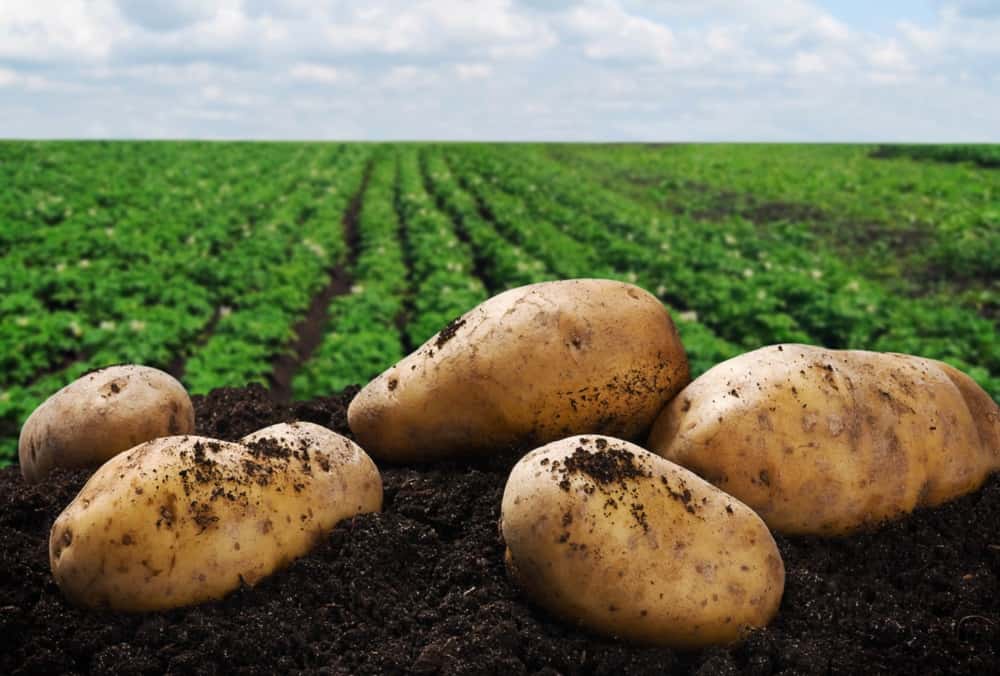
Potatoes are hardy and can grow in some pretty unlikely conditions, even when in the shade. However, in order for potatoes to grow properly, and for the plant to thrive, they require plenty of sun. Potatoes love the sun and do much better in sunlight, rather than in the shade.
Ideally, potatoes need at least six hours of full sun a day, in order to grow under optimal conditions. The best crops of potatoes are produced in conditions of strong sunlight, as well as when they are planted in light, loose, well-drained soil.
How Many Potatoes Will One Plant Produce?
The number of potatoes produced by one plant will depend on many different factors, such as the specific type of potato plant, and the conditions in which it is growing.
However, as a general rule, if all of the conditions are ideal, and the plant is well taken care of, you should get between five to ten potatoes per plant.
If you want to increase the number of potatoes per plant, a good trick you can try out is to plant the potato plants in hills, As potatoes form under the ground, at the base of the plant, helping them be supported will protect their development, allowing for more of them to grow.
So creating a little hill around the plant can help achieve larger amounts of potatoes!
You should also make sure you are watering the potatoes properly, ensuring that the soil is moist but not soggy. Basically, ensuring all of the growing conditions are just right, will help the plant produce more potatoes.
When and how do you Harvest Potatoes?
Harvest Time Indications
There are a few signs that can help determine when potatoes are ready for harvest. First, the plant’s foliage will start to turn yellow and wither. This typically occurs around 10 weeks for early varieties and up to 20 weeks for later varieties.
Harvesting Techniques
When it comes to harvesting potatoes, there are a few methods to consider. One method is to gently dig around the base of the plant with a garden fork to loosen the soil and expose the tubers. Be careful not to damage the potatoes when harvesting; gently lift them out of the soil and remove any excess dirt. Another method is to let the soil dry out a few days before harvest, and then use your hands or a small trowel to dig the potatoes out.
It’s important to harvest potatoes during dry weather, as wet soil can cause the tubers to rot. After harvesting, let the potatoes dry in a well-ventilated area for a few hours before storing them. Store potatoes in a cool, dark, and well-ventilated place, away from sunlight and high temperatures, to ensure longer shelf life and prevent them from sprouting or rotting.

Can You Eat Potatoes Right After Harvest?
If you manage to succeed in growing your very own potatoes, and you get a good amount of them on harvest day, chances are you will be incredibly eager to try them out and use them in a meal, so that you can finally enjoy the labor you put into them.
But…can you eat potatoes right after the harvest? As in, straight after you’ve pulled them from the ground?
Well, typically, potatoes will be cured for long-term storage after they have been harvested so that they will last a long time to be enjoyed at a later date.
However, potatoes can absolutely be eaten right after being harvested, and they will actually be delicious! If anything, we’d say that you should maybe wait to clean off the dirt from the ground first!
Can Potatoes Be Grown All Year Round?
Technically, potatoes can be grown all year round, regardless of the month, as long as the temperature is optimal. They need between 60 to 90 days of absolutely no frost whatsoever in order to grow. So this will be possible depending on the location, and the time of year.
For example, growing potatoes during winter, if your winter gets cold, is going to be very hard, unless you want to grow your potatoes indoors.
Ideally, potatoes should be grown during spring and summer.
Also, you should be aware that although you might be able to grow potatoes outside of their normal season, they will not be as good, and will not last as long, as when they are grown in their ideal optimal conditions.
Conclusion: How Long Does It Take To Grow Potatoes?
In summary, it typically takes 3-4 months to grow potatoes. New potatoes are usually ready to harvest at around 8 weeks or 70 days, while full-sized potatoes can be expected in 3 months (90 days) for most common varieties. Specialized types and larger potatoes may require up to 4 months (120 days) for growth.
Various factors can influence the growth duration, including the potato variety, climate, seed preparation, and fertilizer use. On average, the growing season spans between 70 to 120 days, which is approximately 3 to 4 months.
When planning your potato garden, it is crucial to consider these factors and carefully estimate the specific growth timeline for your chosen variety. By understanding the growth process and requirements, you will be able to enjoy a successful and productive harvest.

